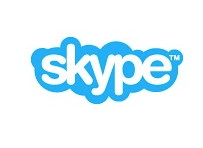Skype has long been talking about the different ways that it could monetize its calling and messaging platform. Now, with Microsoft as its owner and 280 million monthly users passing through its voice, video and messaging network, it looks like it is getting serious.
Today the company unveiled Skype Ads for Windows 8, a new initiative it plans to launch formally in 2013 that will see a number of new ad formats enter the service that play on social interactivity. They include promotions that will appear in conversation streams and ways for two people talking to each other to share sponsored content while communicating on the platform. (Yes, it sounds a lot like what Facebook is doing.)
The move follows other, smaller advances that Skype has made in ads over the past year. Those include putting ads on its home screen, and earlier this year launching Conversation Ads, display ads that appear on the conversation screen when the user does not have Skype Credit or is using Skype for Windows for a Skype-to-Skype call.
Skype president Tony Bates unveiled the plans today at the Monaco Media Forum, but it looks like the initiative is one coming mainly from Microsoft’s advertising division. , which posted about the new service on its own blog rather than on Skype’s. (Although it may well make its way there soon, too, since pre-Microsoft, Skype always posted about its advertising updates over there). Skype/Microsoft have not outlined all of what will be going into this new ad platform, but they have provided some early examples (via AdWeek).
One is a way for advertisers to offer interactive experiences that two parties can engage in at the same time: for example, looking at and playing with a car model (say, a car model promoted by a car company).
Another involves sponsored content ads. It sounds like these could appear in conversation streams (like Facebook), or Skype could even end up running them within voice or video chat windows. It’s not clear whether the ads would get triggered by specific words or phrases or run at random — or any other information about users, a la Facebook’s social graph — but the idea is that they could become subjects to engage with in their own right.
A third seems to revolve around the idea of groups on Skype, which may work something like Facebook Pages. Brands can create their own groups, which the public can join, and then run content through them. For example a reality TV competition could run show clips, offer video calls with contestants, and more.
The idea, it seems, is to create a kind of network of sorts, where the ads become points of conversation in their own right. However, given that in most other scenarios people seem to want to block ads out of their experiences, it’s not clear whether users will welcome this in Skype or find it annoying.
The Microsoft blog post notes that the Skype Ads platform has been built “from the ground up and is completely congruous to the native Skype experience,” meaning that Skype (and Microsoft) are getting a lot more serious about how they want to use the platform as an ad vehicle.
The site has reached a kind of critical mass that could attract big brands to the company’s experiment: Skype is now at over 280 million monthly users and the company says it is growing at 40 percent year on year. Over a year, some 8 billion hours are spent on the service, with video calls growing to account for over 50 percent of all calls on Skype. The company is playing on those “sharing” moments to be places for advertisers to exist as well. Again, though, it remains to be seen whether people will want ads in those places.
“We see advertising as an extension of something we already do really well — connecting people in meaningful ways. We’re reaching people at some of the most important moments of their lives – when they’re getting married, having children, buying homes, taking new jobs,” writes Sandhya Venkatachalam, GM for advertising at Microsoft. “And it’s these activities that create opportunities for brands to reach audiences at the right time, with the right information, when they are making decisions together with the people they care about.”
